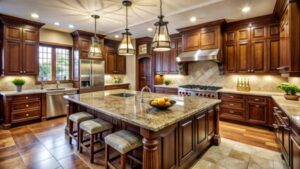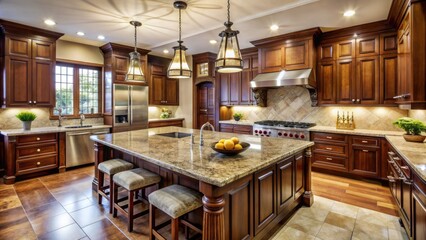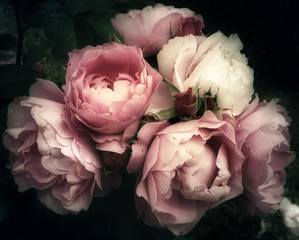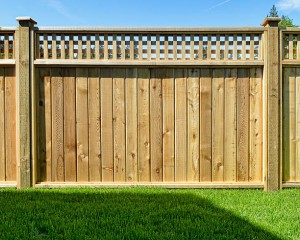Cabinet Refacing Sacramento CA offers a cost-effective way to refresh your space without a full renovation. It involves replacing the exterior surfaces of cabinets while keeping the existing structure intact. This approach improves both the look and functionality of your kitchen or bathroom. It’s a practical solution that saves time and money compared to replacing cabinets entirely.
Choosing cabinet refacing allows for a wide range of style options. You can change the cabinet doors, drawer fronts, and hardware to match your desired aesthetic. Different materials and finishes give you creative flexibility. This customization helps you achieve a modern, traditional, or rustic look.
The process starts with assessing the condition of the existing cabinets. If the internal framework is in good shape, refacing becomes a viable option. Damaged or warped structures may require reinforcement or partial replacement. Ensuring a solid foundation guarantees long-lasting results.
High-quality materials play a key role in successful cabinet refacing. Wood veneers, laminates, and thermofoil provide durable and attractive finishes. Matching the new surface with existing elements creates a cohesive look. Strong adhesives and precise installation ensure a professional finish.
Hardware upgrades enhance both appearance and functionality. Soft-close hinges and modern handles improve ease of use. Coordinating hardware with the overall design enhances the finished look. Small details create a significant impact on the final result.
Cabinet refacing is an environmentally friendly option. It reduces waste by preserving the existing cabinet structure. Fewer materials end up in landfills, and less manufacturing energy is required. Choosing sustainable materials increases the eco-friendly benefits.
Refacing also minimizes disruption to your daily routine. The process takes less time than a full cabinet replacement. Skilled professionals complete most refacing projects in a few days. Reduced downtime allows you to use your space sooner.
Cost savings make cabinet refacing an appealing option. It typically costs less than replacing cabinets entirely. Lower labor and material costs contribute to budget-friendly results. The improved look and functionality increase overall value.
Color selection plays a crucial role in the outcome. Light colors create an open and airy feel. Dark tones add warmth and sophistication. Neutral shades provide versatility and long-term appeal.
Texture adds depth and character to refaced cabinets. Matte finishes offer a modern look, while glossy surfaces reflect light. Natural wood grain patterns create a warm and inviting feel. Mixing textures adds visual interest without overwhelming the space.
Proper surface preparation ensures a smooth application. Cleaning and sanding the existing surface promote strong adhesion. Removing dirt and grease prevents imperfections. Professional preparation results in a flawless finish.
Custom door styles elevate the overall design. Shaker, raised panel, and flat designs each create distinct aesthetics. Edge details and molding add personality and character. Matching door styles with the room’s overall theme ensures harmony.
Drawer front replacement completes the refacing process. Coordinating drawer styles with cabinet doors creates a unified look. Upgraded slides and hardware improve drawer functionality. Precision installation ensures smooth operation.
Adding glass inserts introduces an elegant touch. Frosted or clear glass adds depth and light reflection. Decorative patterns provide a personalized accent. Glass doors make spaces feel more open and inviting.
Lighting enhances the visual impact of refaced cabinets. Under-cabinet lighting highlights the new finishes. Soft LED lights create a warm ambiance. Strategic placement improves both function and appearance.
Open shelving options complement cabinet refacing. Mixing open and closed storage creates a balanced design. Displaying decorative items adds personality. Consistent finishes between shelves and cabinets maintain visual flow.
Crown molding adds a refined touch to refaced cabinets. It creates a finished look at the top of the cabinets. Coordinating molding with door and drawer styles enhances continuity. Proper installation ensures clean and polished edges.
Backsplash updates enhance the impact of cabinet refacing. New tile or paneling creates contrast and texture. Coordinating colors and materials with cabinets strengthens the overall design. A stylish backsplash completes the upgraded look.
Refacing lower and upper cabinets creates a balanced appearance. Consistent color and style maintain visual harmony. Variations in height and depth add interest. Careful planning ensures proportional design.
Cabinet organization improves both function and aesthetics. Pull-out shelves and dividers maximize storage space. Soft-close mechanisms prevent slamming and damage. Proper organization enhances daily convenience.
Countertop updates complement cabinet refacing. Matching tones and textures between surfaces create cohesion. Durable materials enhance both style and function. Professional installation ensures proper alignment and fit.
Paneling on cabinet sides completes the look. Coordinating side panels with door and drawer fronts enhances consistency. Seamless joints and clean edges create a polished finish. Proper panel installation prevents gaps and misalignment.
Under-sink cabinet refacing addresses unique challenges. Moisture-resistant materials protect against water damage. Reinforced corners and seals increase durability. Proper ventilation reduces humidity buildup.
Specialty storage solutions enhance cabinet functionality. Pull-out spice racks, lazy Susans, and utensil organizers improve accessibility. Hidden compartments provide discreet storage options. Thoughtful design increases practical use.
Matching baseboards and trim finalize the design. Coordinating trim with cabinet finishes ensures continuity. Clean lines and even spacing create a professional appearance. Proper installation prevents gaps and uneven edges.
Maintaining refaced cabinets ensures long-term beauty. Regular cleaning with mild solutions protects the finish. Avoiding harsh chemicals prevents surface damage. Proper care preserves the cabinets’ fresh look.
Seasonal adjustments may be necessary for wood-based materials. Humidity and temperature changes cause expansion and contraction. Flexible joints and secure mounting prevent misalignment. Adapting to environmental conditions maintains structural integrity.
Soft-close mechanisms increase comfort and longevity. Smooth operation reduces wear and tear. Adjustable tension settings allow customization. Upgraded hardware ensures reliable performance.
Mixing materials creates a customized look. Combining wood and glass introduces contrast. Matte and glossy finishes add dimension. Balanced material selection ensures a cohesive result.
Strategic refacing highlights architectural details. Beadboard, wainscoting, and inset panels add character. Custom designs enhance the room’s overall style. Detailed craftsmanship increases value and uniqueness.
Protective coatings preserve the refaced finish. UV-resistant treatments prevent fading and discoloration. Moisture barriers protect against humidity. Professional application extends surface durability.
Professional cabinet refacing increases property value. A refreshed kitchen or bathroom attracts buyers. Modern styles and improved functionality enhance market appeal. Investing in quality refacing provides a high return on investment.
Creative accents personalize refaced cabinets. Decorative handles, carved details, and unique finishes add personality. Mixing metals and textures creates a custom look. Thoughtful accents elevate the overall design.
Soft, natural lighting enhances refaced cabinet finishes. Diffused light reduces glare and highlights texture. Coordinating light temperature with cabinet tones improves color accuracy. Proper lighting placement enhances depth and dimension.
Cabinet refacing transforms both residential and commercial spaces. Office and retail settings benefit from updated cabinetry. Durable finishes withstand high-traffic use. Professional refacing improves both style and function.
Environmental benefits of cabinet refacing extend beyond waste reduction. Sustainable materials reduce carbon footprints. Eco-friendly adhesives and finishes protect indoor air quality. Choosing green options supports responsible resource use.
Investing in cabinet refacing offers both aesthetic and functional rewards. Professional installation ensures proper alignment and long-lasting results. Thoughtful design choices create a cohesive and polished look. Refacing enhances the beauty and value of any space.




 One of the most immediate and noticeable benefits of underbrush mulching is the increased usability of your property. Overgrown underbrush can make a property difficult to navigate and reduce the overall aesthetic appeal of the land. Thick vegetation, tangled vines, and invasive plants can create barriers that limit access to different parts of the property and make it difficult to use the land for recreational or agricultural purposes.
One of the most immediate and noticeable benefits of underbrush mulching is the increased usability of your property. Overgrown underbrush can make a property difficult to navigate and reduce the overall aesthetic appeal of the land. Thick vegetation, tangled vines, and invasive plants can create barriers that limit access to different parts of the property and make it difficult to use the land for recreational or agricultural purposes.


